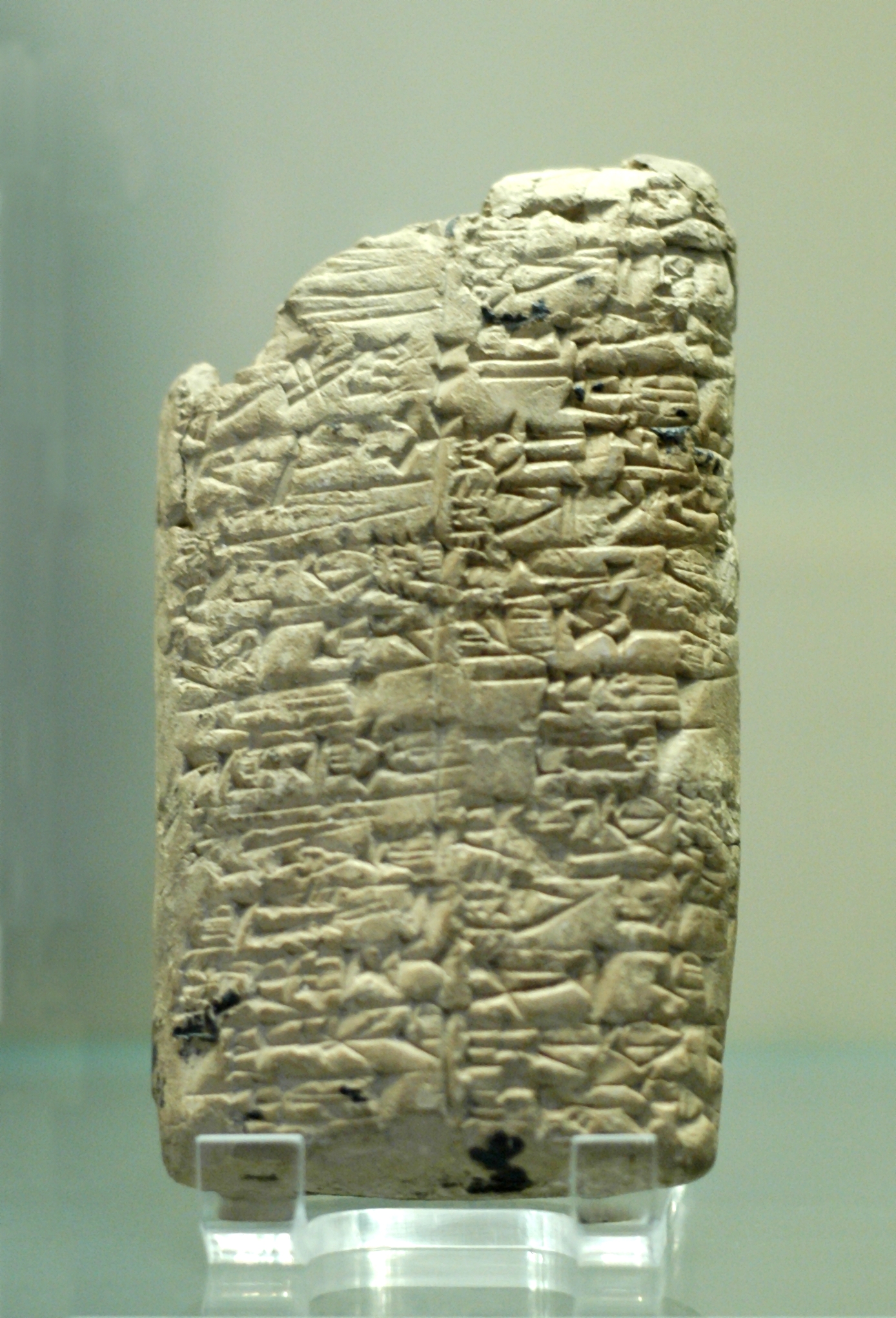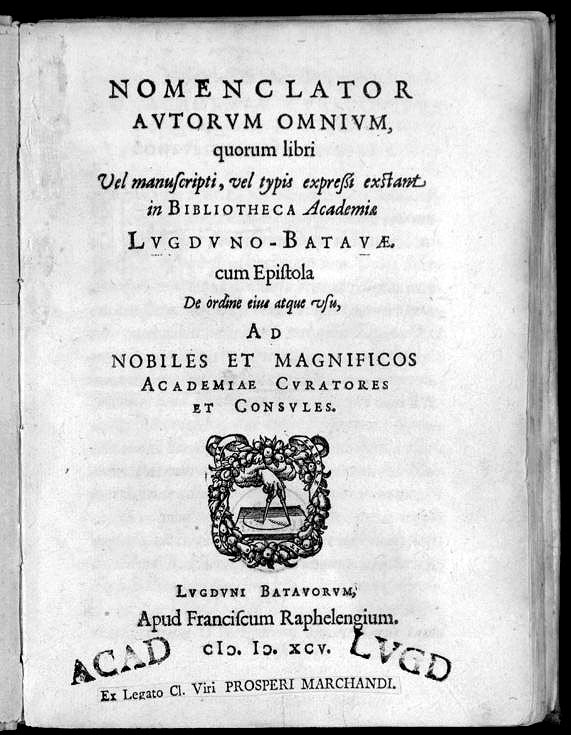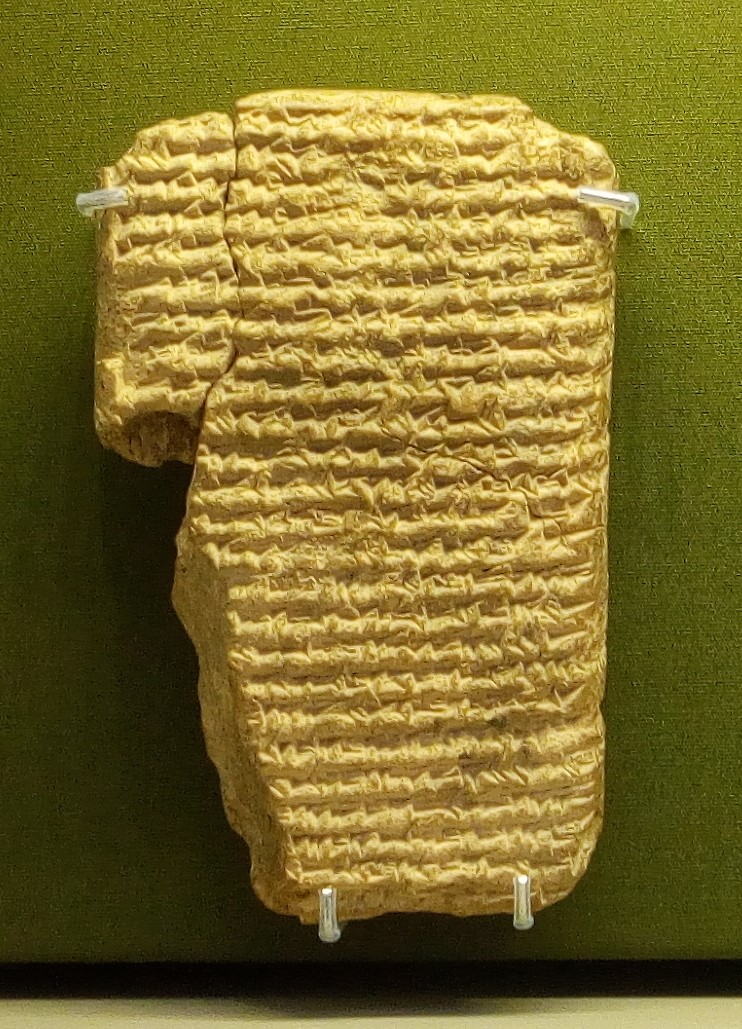|
Böhl Collection
The De Liagre Böhl Collection of Cuneiform Inscriptions or Böhl Collection is a collection of clay tablets and other objects inscribed with cuneiform texts in Leiden, the Netherlands. Description The collection is named after its collector, Frans de Liagre Böhl. It comprises the largest collection of cuneiform tablets in the Netherlands. In addition to 3355 cuneiform objects (including seals), the collection incorporates a small number of objects from the ancient Near East and Egypt. The owner of the collection is The Netherlands Institute for the Near East in Leiden; the cuneiform tablets are available for consultation in the Special Collections Reading Room of Leiden University Libraries. A few objects from the Böhl Collection are on display in the permanent gallery "The Ancient Middle East" of the National Museum of Antiquities, Leiden. File:NINODeLiagreBohlLB1321.jpg, link=Bestand:NINODeLiagreBohlLB1321.jpg, Clay tablet from the library of Ashurbanipal Ashurbanipal ( ... [...More Info...] [...Related Items...] OR: [Wikipedia] [Google] [Baidu] |
Clay Tablet
In the Ancient Near East, clay tablets (Akkadian language, Akkadian ) were used as a writing medium, especially for writing in cuneiform, throughout the Bronze Age and well into the Iron Age. Cuneiform characters were imprinted on a wet clay tablet with a stylus often made of Reed (plant), reed (reed pen). Once written upon, many tablets were dried in the sun or air, remaining fragile. Later, these unfired clay tablets could be soaked in water and recycled into new clean tablets. Other tablets, once written, were either deliberately fired in hot kilns, or inadvertently fired when buildings were burnt down by accident or during conflict, making them hard and durable. Collections of these clay documents made up the first archives. They were at the root of the first library, libraries. Tens of thousands of written tablets, including many fragments, have been found in the Middle East. Most of the documents on tablets that survive from the Minoan civilization, Minoan and Mycenaean ... [...More Info...] [...Related Items...] OR: [Wikipedia] [Google] [Baidu] |
Cuneiform
Cuneiform is a Logogram, logo-Syllabary, syllabic writing system that was used to write several languages of the Ancient Near East. The script was in active use from the early Bronze Age until the beginning of the Common Era. Cuneiform scripts are marked by and named for the characteristic wedge-shaped impressions (Latin: ) which form their Grapheme, signs. Cuneiform is the History of writing#Inventions of writing, earliest known writing system and was originally developed to write the Sumerian language of southern Mesopotamia (modern Iraq). Over the course of its history, cuneiform was adapted to write a number of languages in addition to Sumerian. Akkadian language, Akkadian texts are attested from the 24th century BC onward and make up the bulk of the cuneiform record. Akkadian cuneiform was itself adapted to write the Hittite language in the early second millennium BC. The other languages with significant cuneiform Text corpus, corpora are Eblaite language, Eblaite, Elamit ... [...More Info...] [...Related Items...] OR: [Wikipedia] [Google] [Baidu] |
Leiden
Leiden ( ; ; in English language, English and Archaism, archaic Dutch language, Dutch also Leyden) is a List of cities in the Netherlands by province, city and List of municipalities of the Netherlands, municipality in the Provinces of the Netherlands, province of South Holland, Netherlands. The municipality of Leiden has a population of 127,046 (31 January 2023), but the city forms one densely connected agglomeration with its suburbs Oegstgeest, Leiderdorp, Voorschoten and Zoeterwoude with 215,602 inhabitants. The Statistics Netherlands, Netherlands Central Bureau of Statistics (CBS) further includes Katwijk in the agglomeration which makes the total population of the Leiden urban agglomeration 282,207 and in the larger Leiden urban area also Teylingen, Noordwijk, and Noordwijkerhout are included with in total 365,913 inhabitants. Leiden is located on the Oude Rijn (Utrecht and South Holland), Oude Rijn, at a distance of some from The Hague to its south and some from Amsterdam ... [...More Info...] [...Related Items...] OR: [Wikipedia] [Google] [Baidu] |
Frans De Liagre Böhl
Franz "Frans" Marius Theodor de Liagre Böhl (Vienna, Austria, 16 August 1882 – Milsbeek or Nijmegen, the Netherlands, 16 November 1976) was a Dutch professor of Assyriology and Hebrew language, Hebrew. Milsbeek is mentioned as his place of death. Nijmegen is mentioned as his place of death. Nijmegen is mentioned as his place of death. Nijmegen is mentioned as his place of death. His father was Eduard Böhl (1836-1903), a well-known Protestantism, Protestant clergyman and later a professor of Biblical Studies, Old Testament studies at the University of Vienna, who had married the daughter Anna of the influential Dutch Protestant theologian Hermann Friedrich Kohlbrugge (1803-1875). His second marriage was with Baroness Jacoba Frederica "Jacqueline" van Verschuer (1846-1921), who became Franz's mother. In 1949 Franz Böhl added ''de Liagre'' to his surname Böhl, to prevent his grandmother's birth name from becoming extinct. He married Elisabeth Henriëtte Fabius (1886-1921) ... [...More Info...] [...Related Items...] OR: [Wikipedia] [Google] [Baidu] |
Cuneiform Digital Library Initiative
The Cuneiform Digital Library Initiative (CDLI) is an international digital library project aimed at putting text and images of an estimated 500,000 recovered cuneiform tablets created from between roughly 3350 BC and the end of the pre-Christian era online. Directors of the project are Robert Keith Englund from University of California, Los Angeles and Jürgen Renn of the Max Planck Institute for the History of Science. Co-principal investigators are Jacob Dahl at Oxford University, Bertrand Lafront at the Centre national de la recherche scientifique, Nanterre and Émilie Pagé-Perron, University of Toronto. Preceding leadership comprised co-director Peter Damerow (1939–2011) from the Max Planck Institute for the History of Science and Pennsylvania Sumerian Dictionary leader Stephen J. Tinney who was co-principal investigator. In 2004, Englund received the Richard W. Lyman Award from the National Humanities Center for his work on the initiative. The project began in 1998, ... [...More Info...] [...Related Items...] OR: [Wikipedia] [Google] [Baidu] |
Near East
The Near East () is a transcontinental region around the Eastern Mediterranean encompassing the historical Fertile Crescent, the Levant, Anatolia, Egypt, Mesopotamia, and coastal areas of the Arabian Peninsula. The term was invented in the 20th century by modern Western geographers and was originally applied to the Ottoman Empire, but today has varying definitions within different academic circles. The term ''Near East'' was used in conjunction with the ''Middle East'' and the ''Far East'' (China and beyond), together known as the "three Easts"; it was a separate term from the ''Middle East'' during earlier times and official British usage. As of 2024, both terms are used interchangeably by politicians and news reporters to refer to the same region. ''Near East'' and ''Middle East'' are both Eurocentrism, Eurocentric terms. According to the National Geographic Society, the terms ''Near East'' and ''Middle East'' denote the same territories and are "generally accepted as comprisin ... [...More Info...] [...Related Items...] OR: [Wikipedia] [Google] [Baidu] |
Ancient Egypt
Ancient Egypt () was a cradle of civilization concentrated along the lower reaches of the Nile River in Northeast Africa. It emerged from prehistoric Egypt around 3150BC (according to conventional Egyptian chronology), when Upper and Lower Egypt were amalgamated by Menes, who is believed by the majority of List of Egyptologists, Egyptologists to have been the same person as Narmer. The history of ancient Egypt unfolded as a series of stable kingdoms interspersed by the "Periodization of ancient Egypt, Intermediate Periods" of relative instability. These stable kingdoms existed in one of three periods: the Old Kingdom of Egypt, Old Kingdom of the Early Bronze Age; the Middle Kingdom of Egypt, Middle Kingdom of the Middle Bronze Age; or the New Kingdom of Egypt, New Kingdom of the Late Bronze Age. The pinnacle of ancient Egyptian power was achieved during the New Kingdom, which extended its rule to much of Nubia and a considerable portion of the Levant. After this period, Egypt ... [...More Info...] [...Related Items...] OR: [Wikipedia] [Google] [Baidu] |
The Netherlands Institute For The Near East
The Netherlands Institute for the Near East (Dutch: ''Nederlands Instituut voor het Nabije Oosten''; colloquially known by its abbreviation: NINO) is an institution for the advancement of the study of the Ancient Near East, Mesopotamia, Anatolia, and Egypt. It is internationally known for its library collections and collection of cuneiform inscriptions. History NINO was independently founded in 1939 and housed at Noordeindsplein 4a in Leiden on the initiative of Arie Kampman, closely linked to the Dutch oriental society " Ex Oriente Lux". Its first co-directors were Frans de Liagre Böhl and Adriaan de Buck, professors of Assyriology and Egyptology, respectively, at Leiden University. The Online Egyptological Bibliography was edited at NINO 1947–2009. In 1955 Kampman was appointed director. The institute maintained close ties to Leiden University, moving into the Faculty of Humanities' newly built Witte Singel complex in 1982. An agreement for close cooperation, effective ... [...More Info...] [...Related Items...] OR: [Wikipedia] [Google] [Baidu] |
Leiden University Library
Leiden University Libraries is the set of libraries of Leiden University, founded in 1575 in Leiden, Netherlands. A later edition entitled ''The bastion of liberty : a history of Leiden University'', was published in 2018. Full-text at archive.org. Holdings include some five million volumes, one million e-books, ninety thousand electronic journal, e-journals, two thousand current paper Academic journal, journals, and three thousand cuneiform tablets. The library manages large collections on Indonesia and the Caribbean, and curates seven entries in UNESCO's international and Dutch Memory of the World, Memory of the World Register. Joseph Justus Scaliger, who was a languages and history professor at Leiden from 1593 up to 1609, commented in Latin on the library: :"''Est hic magna commoditas bibliothecae ut studiosi possint studere''" ::—Josephus Justus Scaliger :"Here [at Leiden] is the great convenience of a library so that those who want to study [students], can study." His ... [...More Info...] [...Related Items...] OR: [Wikipedia] [Google] [Baidu] |
Rijksmuseum Van Oudheden
The (English language, English: National Museum of Antiquities) is the national archaeology, archaeological museum of the Netherlands, located in Leiden. It grew out of the collection of Leiden University and still closely co-operates with its Faculty of Archaeology. The museum calls itself "the national centre for archaeology" and focuses on ancient Egypt, the ancient Near East, the classical world of Ancient Greece, Greece, Etruria and Ancient Rome, Rome and the early (prehistoric, Roman and Medieval) Netherlands. Current collection The current collection of the museum is divided in the following categories: * Ancient Egypt * Ancient Near East * Etruscan civilization * Ancient Greece * Ancient Rome * History of the Netherlands#Prehistory (before 800 BC), Prehistoric Netherlands * History of the Netherlands#Roman era (57 BC – 410 AD), Roman Netherlands * History_of_the_Netherlands#Early_Middle_Ages_to_Holy_Roman_Empire, Medieval Netherlands In the central hall of t ... [...More Info...] [...Related Items...] OR: [Wikipedia] [Google] [Baidu] |
Ashurbanipal
Ashurbanipal (, meaning " Ashur is the creator of the heir")—or Osnappar ()—was the king of the Neo-Assyrian Empire from 669 BC to his death in 631. He is generally remembered as the last great king of Assyria. Ashurbanipal inherited the throne as the favored heir of his father Esarhaddon; his 38-year reign was among the longest of any Assyrian king. Though sometimes regarded as the apogee of ancient Assyria, his reign also marked the last time Assyrian armies waged war throughout the ancient Near East and the beginning of the end of Assyrian dominion over the region. Esarhaddon selected Ashurbanipal as heir 673. The selection of Ashurbanipal bypassed the elder son Shamash-shum-ukin. Perhaps in order to avoid future rivalry, Esarhaddon designated Shamash-shum-ukin as the heir to Babylonia. The two brothers jointly acceded to their respective thrones after Esarhaddon's death in 669, though Shamash-shum-ukin was relegated to being Ashurbanipal's closely monitored vassal. Mu ... [...More Info...] [...Related Items...] OR: [Wikipedia] [Google] [Baidu] |
Ancient Mesopotamia
The Civilization of Mesopotamia ranges from the earliest human occupation in the Paleolithic period up to Late antiquity. This history is pieced together from evidence retrieved from archaeological excavations and, after the introduction of writing in the late 4th millennium BC, an increasing amount of historical sources. Mesopotamia has been home to many of the oldest major civilizations, entering history from the Early Bronze Age, for which reason it is often called a cradle of civilization. Short outline of Mesopotamia Mesopotamia (; ) means "Between the Rivers". The oldest known occurrence of the name Mesopotamia dates to the 4th century BC, when it was used to designate the area between the Euphrates and the Tigris. The name was presumably translated from a term already current in the area—probably in Aramaic—and apparently was understood to mean the land lying "between the (Euphrates and Tigris) rivers", now Iraq. Later and in the broader sense, the historical region ... [...More Info...] [...Related Items...] OR: [Wikipedia] [Google] [Baidu] |








